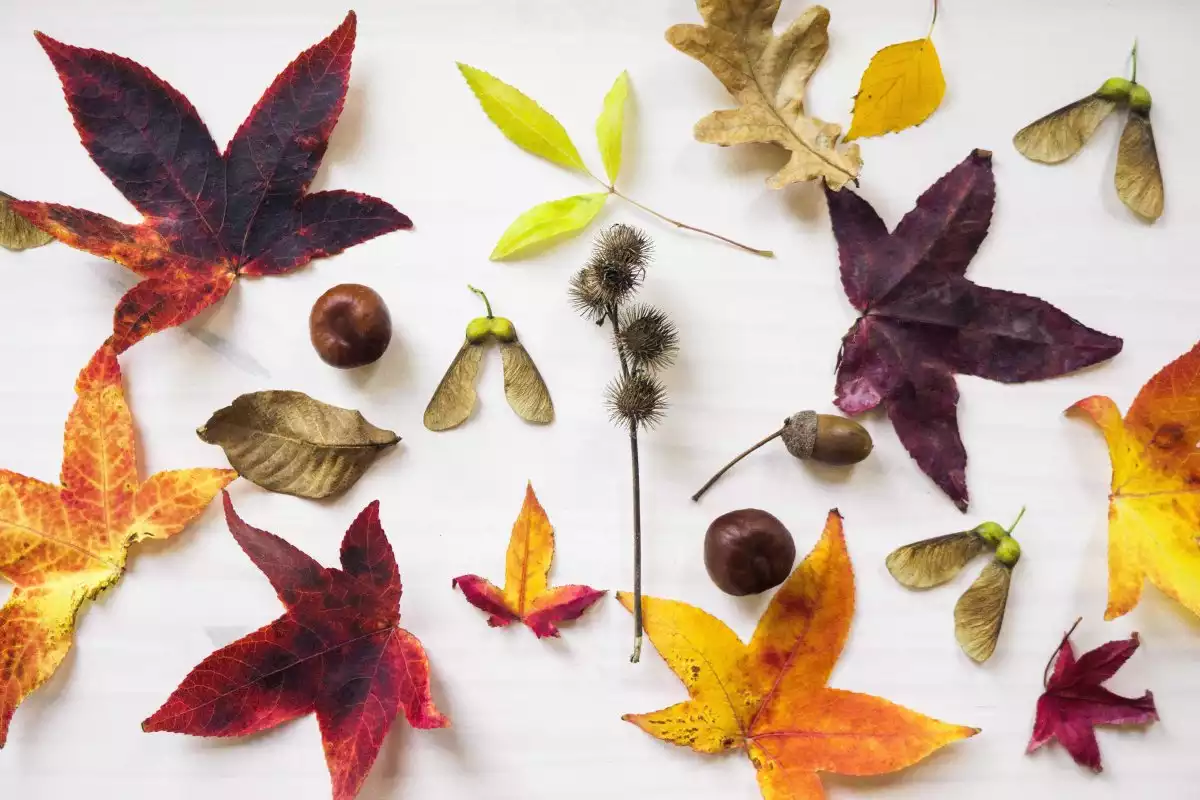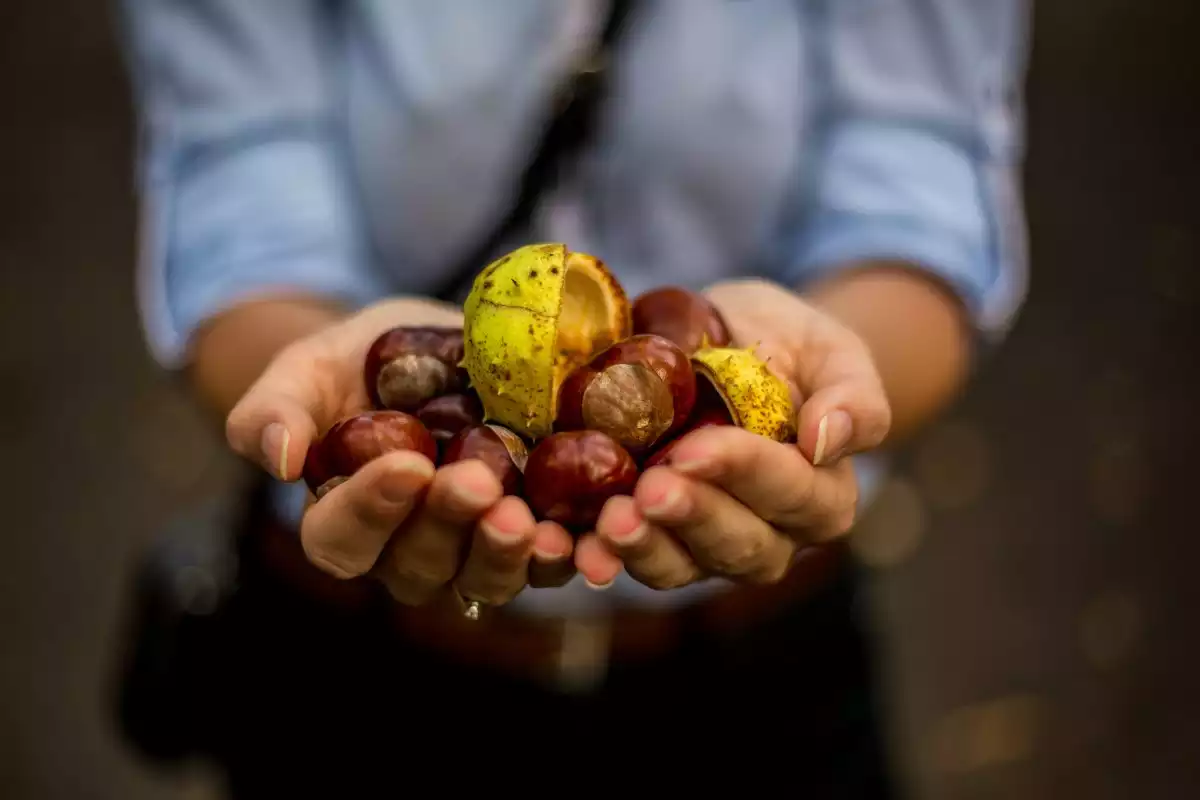Chestnuts bring us many benefits; they are typical of autumn and excellent to combat cold. The fruit of the chestnut tree has nutritional properties that include protecting the health of our bones, as well as providing us with all the essential amino acids.
When we eat them, and we want to obtain all their nutrients and beneficial components, apart from roasted, they can be cooked in many different ways: roasted, in cream, in the microwave, etc..
To learn more about this food, in this article we will talk about the characteristics and properties of the chestnut. We will also explain how to prepare different chestnut recipes.
What are chestnuts?
The chestnut is a type of fruit covered by a thorny layer known as a cupule and usually has 2 achenes called chestnuts. On the outside, it has a soft, shiny and brown color texture. On the inside, however, it is made up of whitish hairs that give it a velvety touch.
The seed, which is the edible part, is beige and a bit coarse, and it also has a whitish and velvety texture. The chestnut tree, also called by its scientific name Castanea sativa, is the tree that gives these fruits and belongs to the family of the Fagaceae.
These nuts are very nutritive and they have been an indispensable source of food for many years in Europe, Asia, and North America. In the south of Europe, they were used to make flour due to the lack of cereal flour. The flour made from this nut can be useful to cook bread, cakes, and even pasta.
The chestnut was introduced in Europe from Asia Minor and called Sardian nut due to the old city of Sardis. From then, it has become an essential product in a lot of places in Europe and other parts of the world.
In Spain, there is a celebration in Galicia, Asturias, and Extremadura, called "magosto," in which the tradition is to pick up chestnuts at the end of October and beginning of November.
In Catalonia and Aragon, they celebrate "la Castanyada" on the 1st November -All Saints Day- in which they eat chestnuts, and also sweet potatoes and other traditional sweets known as "panellets" (almond balls covered in pine nuts).
In relation to its production in the market, China, South Korea, Italy, and Turkey are the ones that produce the most chestnuts in the world. China is in the first place, and most of its production is for internal consumption.

Properties and benefits
Chestnuts have a high nutritional and caloric content, that was also used as a source of food for pets because they have a high number of vitamins, minerals, proteïns, carbohydrates, and unsaturated fats.
They are rich in vitamin A (retinol), vitamin B1 (thiamine), vitamin B2 (riboflavin), vitamin B3 (niacin), vitamin B6 and, above all, vitamin C. The also provide our body with calcium, iron, magnesium, phosphorus, zinc, and potassium.
The chestnut tree fruit has a lot of properties and benefits for our body that can help us in different ways to maintain our general health.
This food is so rich in carbohydrates and fiber that it exerts a satiating effect on our body. That is why it is often recommended in losing weight plans.
The minerals and vitamins that the chestnut has give it properties to maintain the health of our bones and teeth, as well as to ensure the proper functioning of the nervous system.
As it has all essential amino acids, it is recommended for vegans, athletes, children, and seniors because it has plenty of vegetable protein. It can prevent and improve some pathologies such as:
Diabetes
Hypercholesterolemia
Constipation
Intestinal disorders
High blood pressure
However, it's important to highlight that they should not be consumed raw because there are some elements in their composition (tannins) that can produce stomach discomfort. They should be eaten roasted, boiled, dried out, in flour, etc.
So that they preserve all their properties, it is important to buy them when they are not very hard or very soft and without any spots. When it comes to conserving them, they must be placed in a dry container without covering them with any bag or rag.
Chestnut recipes (3 ways of cooking them)
Although roasted chestnuts are the most common way of eating this food, especially in autumn, there are other traditional ways of eating and cooking these nuts, such as making a purée or a cake. In the following lines, we explain 3 easy recipes to prepare them:
1. Roasted chestnuts (in the oven or the microwave)
Chestnuts can be roasted in the oven, on the grill or in the microwave. In this case, we will explain how to make them in the oven and the microwave. No matter what option you choose, the first thing you have to do is a cut on the round part so you can peel them well later.
To cook them in the oven, we first have to preheat it for some minutes at 180º-200º. Then we put the chestnuts at 200º for 20-30 minutes, depending on the size and the quantity. It is important to turn them over when half of the time has gone by.
When they are hot, you can add a bit of salt so that they are a bit tastier. We recommend putting them in hot water for some minutes before putting them in the oven.
On the other hand, if we do not have time, we can cook them in the microwave. How? It is straightforward, we get 10 chestnuts, and we wash them. Then, we dry them, and we put them in a container that can go in the microwave, and we cover it with some film with holes. We put in the microwave for 2 minutes at 800W and done!
2. Cream or purée
To prepare chestnut cream, we need approximately 1 kilo of them, a liter of chicken broth, 1/4 of liquid cream and a bit of salt.
For their preparation, the first thing you have to do is put the broth and the peeled chestnuts (they can be bought peeled, or you can first roast them in the oven to be able to peel them) in a pan. Then let them cook slowly in the pan with the broth and add the cream. Stir for a few minutes. Remove and let it rest. Next, blend it with the mixer until we get to make a kind of purée. Put it through the strainer and add a little salt if necessary.
3. Chestnut cake
To prepare a chestnut cake made from a traditional sponge cake we need 700 grams of chestnuts, 100 grams of butter, 150 grams of sugar, 6 eggs, and 500 milliliters of milk.
First, roast some chestnuts. Make a small cut on them so we can peel them and then put them in a pan with water to cook them for around 5 minutes. Peel and put them in a container with milk. Blend with some butter.
Then, mix the sugar and the yolks of the eggs in a bowl. When the mixture is white, add the roasted chestnut cream and mix it all. Beat the egg whites until stiff and add them to the bowl little by little.
To finish, pour the cake dough into a cake mold for half an hour at 180º. Let it cool down and remove the mold. Decorate to your liking, and it is ready to serve.
